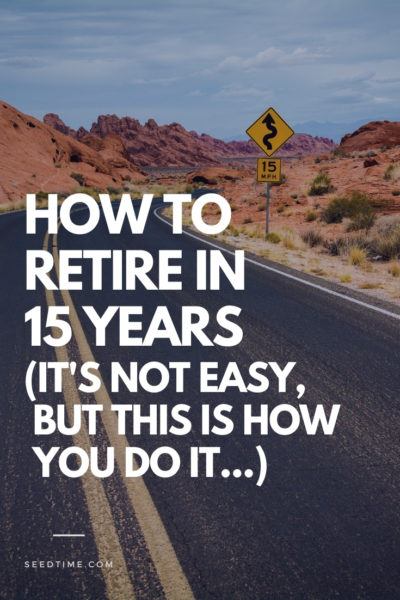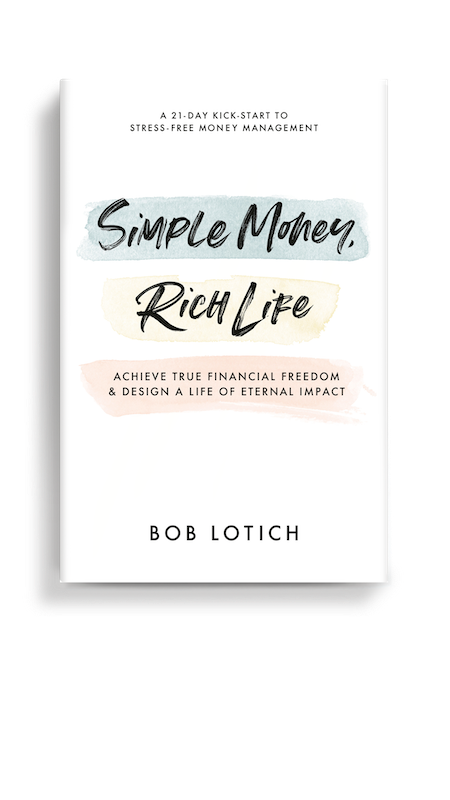(The following is an abbreviated transcription from a video Linda & I recorded. Please excuse any typos or errors.)

In this article we’re talking about how to retire in 10 years, 15 years, or even 5 years.
Now this is not easy.
I’m going to say that up front.
But I’m going to give you the math and the numbers behind how to do this.
If you want to retire early, this is exactly what you need to do.
Linda and I recorded our discussion that you can listen to on our Podcast, watch on Youtube or you can read the full transcription below.
When will you be able to retire?
Bob: Here’s an incredibly easy way to tell when you are going to be able to retire and it’s simply this, what percentage of your income can you save?
That’s it? So here’s the real question for you.
So let’s say you have somebody who makes $500,000 a year. Okay. And they save $50,000 a year. And then you have somebody who earns $50,000 a year and they save $5,000.
Linda: Okay.
Bob: Which one can retire sooner?
Linda: I think the 500,000.
Bob: It’s exactly the same.
Linda: Really?
Bob: Yeah. Because their lifestyle. They both can save 10% of their income and their lifestyle determines when they can retire.
Linda: gotcha.
Doing the math
Bob: So the amount that you can save, the percentage of your income that you can save, that’s the determining factor on when you are going to be able to retire. So with that, I’m going to take you over to this little calculator over here that I found, it’s really cool.
Cause you can plug this data in and you can see what it would take for you to retire at 15 years. The spoiler is that it’s about 50%. You can save about 50% of your income. You can retire in 15 years.
Linda: Wow.
Bob: Okay. So we’ll just go ahead and plug some data in here. Right now, annual income $50,000 and annual expenses $45,000.
We’re saving 10%, and that is leading to being able to retire in 46 years. So that’s not what most people want retiring in 46 years when you’re age 40. But let’s plug something in here.
Linda: But it’s also better than nothing, right?
Bob: Yeah. Let’s say instead of doing 10%, you’re saving 20%.
And so we’ll knock it down to $40,000 and see what that does. So 33 years. We’ve knocked it down pretty considerably by doing that. Now let’s go to 50% of your income. Let’s say we’re saving that. And just like that, if we’re saving 50% of our income, or essentially living off of 50% of your income, maybe that’s a better way to say it.
We can now have financial independence in 15 years.
It doesn’t matter how much you make
But again, it doesn’t matter how much you make, it’s how much you can live off of. So if you have a low income, you just need to have a lower expenses. So if you have a $100,000 salary, you’re living off of $50,000, it’s going to be exactly the same.
And even if you, if we add a zero to each one of these. So we have a million dollar salary, but we’re living off of $500,000. It’s still the same. It’s still 15 years before we can achieve financial independence. Now, if we have that million dollar salary and we can live off a hundred thousand dollars, which should be somewhat reasonable, right.
We can instantly have financial independence in two years. Okay. And so you can play with this calculator all you want.
Linda: Two years?
Bob: Yeah, because if you have $900,000 that you can put away each year.
Linda: That’s amazing.
Bob: To be invested and to be earning you back some dividends you can live off of. The math is pretty simple here. So, yeah, you can play with this calculator and plug everything in and just explore this a little bit.
What percentage can you actually live off of?
But I found this to be fascinating, cause I didn’t realize that. And I, think most people don’t. That it’s not about how much money you make. It’s about what percentage you can actually live off of.
That’s the thing that determines when you’ll be able to retire.
Linda: Gotcha. I mean, yeah, this is interesting because what I like is that anybody can put in their annual income and then play around with the other numbers. If you’re making a game out of it and trying to reduce your expenses, like how low can you go? And how quick can you get this done? That’s pretty fun.
The F.I.R.E. movement
Bob: Yeah. And there’s some people in the F.I.R.E. movement who like go to extreme frugality, which is not my cup of tea. I don’t really, like the crazy insane frugality. But, I am all for being a really smart spender and definitely not wasting money. Being really strategic about how and when we’re spending money. And yeah, and continuing to drive down the amount that we can live off of.
Creating a survival budget
One of the things that we talk about sometimes is creating a survival budget just to see what is the bare minimum we can get by on. And that’s a really good thing to figure out. All right, this amount say it’s $5,000 a month is comfortable for us. But we can actually survive on $3,500 a month, if we did this and cut this. I don’t want to live the rest of my life like that, but we can survive on that. And that’s really comforting knowing that.
Linda: Yeah.
Bob: But in terms of this, it’s ideally something where it’s like, we can live fairly comfortably at this level and we can sustain this.
If we can do that, then at this point, we can retire and yeah.
The importance of investing early
Linda: Well, what’s even fascinating about this is, like you’ve talked about the rate of return. And the earlier you invest, the earlier you can invest more. Then it’s going to grow so much quicker. So I even liked the idea of maybe you take a year and you live off your survival budget for the year and invest everything you can.
And then, at the end of that year, you’re like, okay, now we’re done. We reached our goal just for that purpose.
Bob: If you do that early, if you’re able to do that in your twenties or something, that money is just going to continue to build and build, you know…
Linda: Right.
Bob: …for the rest of your life.
That one time move is really, powerful.
Illustrations of investing at different ages
There’s all these illustrations that you’ll find. They’ll have example of Sally and Bob invests from age 20 to 25.
Linda: What about Linda and Bob?
Bob: Fine. We’ll do Linda and Bob. Linda invests from age 20 to 25 and doesn’t do anything else. And Bob starts investing at age 30 and puts in the same amount every single year for the next 30 years.
And Linda ends up having more money. Because that’s the power of time in the compounding factor. It’s just so powerful. So the earlier the better, so yeah, that is an interesting idea. Yeah, I like that.
Linda: Yeah. Think about being a newlywed. We, were in a different position where we really didn’t have any extra. We were on the survival budget just to… yeah it was tight for awhile. But, if you’ve got some extra money, what does that look like to be on the survival budget?
Plus like all of the things that you learned just by doing that, it’s going to set you up for good things for the rest of your life. If you can control your spending and, just start thinking creatively and with a different lens.
Summary
Bob: Yeah. So anyway, summing this up if you want to know how to retire in 15 years, this is it. You need to spend or live on 50% of your money. Survive on 50% of your income. If you can do that, you can have financial independence and retire in 15 years.
Now, we recently did a podcast where we talked about whether or not it’s right for Christians to chase after financial independence and retiring early. So you can go check out that conversation.
But for those who I’m just curious about the numbers and the math, here it is. And, if you know anybody who would really love this and enjoy this, feel free to share it with them!




